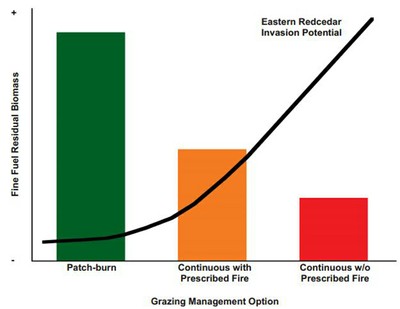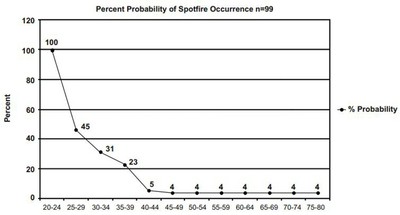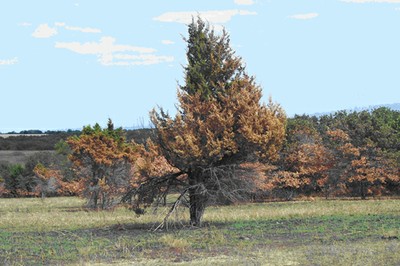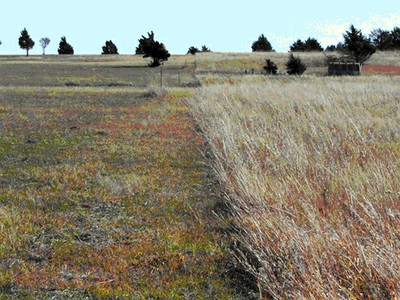Prescribed Fire Program
Patch burning benefits all aspects of a prescribed burning program. The major benefit of patch burning is the additional accumulation of fine fuel, which is readily achieved without any deferment of grazing before or after burning (Figure 12). With larger amounts of fine fuel, burns can be conducted under safer weather conditions, including lower air temperature and higher relative humidity (Figure 13). With greater amounts and more continuous fine fuel loads, fires can be more intense, which results in better suppression of woody plants. We have observed numerous large eastern redcedar trees killed with fire in patch burned pastures that had escaped several previous prescribed burns under traditional management (continuous grazing with a 3-year fire-return-interval).
Patch burning allows prescribed fires to be conducted at different times of the year, which can spread out the burn season and provide more time to conduct fires. Days with adequate weather conditions are limited during traditional burning seasons, which cause burn bosses to push the edge of safety by burning on days with marginal weather conditions, or not to conduct burns at all. Therefore, a manager whose objective is a 3-year fire-return-interval often is unable to achieve the objective with traditional management practices because of limited available burn days within prescription.
Another benefit of patch burning is that fires can be allowed to burn into previously burned areas making prescribed burns safer and easier to conduct. The previously burned and grazed patches contain insufficient fine fuel available to carry a fire. We recommend planning prescribed burns to utilize these pre-burned areas as firebreaks as much as possible.
Because patch burning reduces the size of the burn unit, burning smaller units can make the prescribed fire operation less complicated and costly. It may require fewer personnel and less equipment to conduct the burn than when an entire pasture is burned. Burning smaller units produces less smoke and minimizes smoke management issues. The amount of time spent patrolling the fireline and in post burn mop-up is also reduced.
Figure 12. The effect of grazing management option on fine fuel residual biomass and subsequent potential for eastern red cedar invasion. Patch burning allows portions of the management unit which have not been recently burned to increase in fine fuel load. This build up in fine fuels enables prescribed fires to effectively control eastern red cedar. In contrast, continuous grazing with fire at similar stocking rates does not provide adequate fuel accumulations for any part of the management unit, which hinders the ability of prescribed fires to effectively control eastern red cedar. Grazing without prescribed fire allows eastern red cedar to decrease fine fuel production over time.
Figure 13. Burning with higher fine fuel loads allows prescribed fires to be conducted with higher relative humidity, which reduces the probability of spot fires (from Weir 2004).
Caption: Patch burning increases fuel loading in unburned patches, which increases fire intensity and topkill of woody plants. The redcedar in the foreground occurs in a pasture that was burned four times previously with traditional management practices (note lack of leaves in lower portion), but it was not killed because fire intensity was low and the tree’s apex remained unscorched; because fine fuel load increases with patch burning, these larger trees are finally being eliminated. Photo John R. Weir.
Caption: Accumulation of fine fuel for conducting prescribed burns is important. The patch on the left was the last one burned and grazed, the patch on the right was burned and grazed three years previous, and it is the next patch to be burned. Photo John R. Weir.




